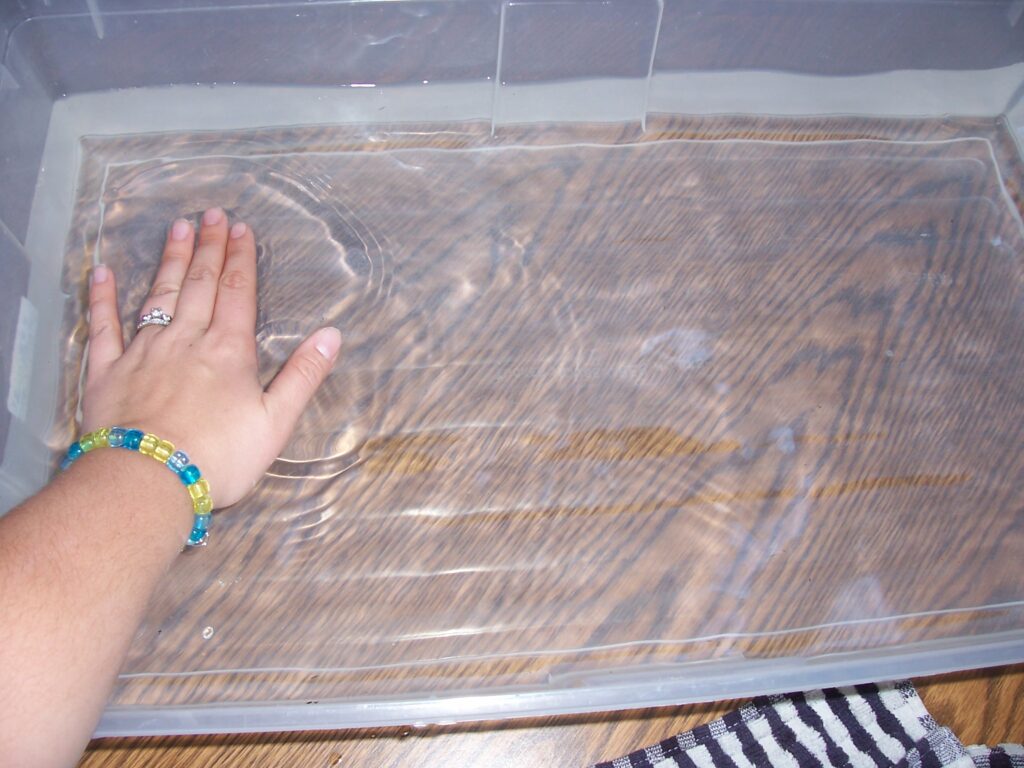June 26, 2012
 by: Norman Barstow
by: Norman Barstow
Simulated Fossil Dig
Archeology is the study of society through the discovery, recovery and analysis of the material culture and environmental data that humans have left behind. The data can include artifacts, architecture, and cultural landscapes.
Read the rest of this entry »
 Leave a Comment » |
Leave a Comment » |  Earth Science, Elementary level, Middle School level | Tagged: archeology, fossil dig, fossils, homeschool, paleontology, parent friendly |
Earth Science, Elementary level, Middle School level | Tagged: archeology, fossil dig, fossils, homeschool, paleontology, parent friendly |  Permalink
Permalink
 Posted by Tami O'Connor
Posted by Tami O'Connor
June 9, 2012
 by: Michelle Bertke
by: Michelle Bertke
Sound can be a difficult concept to portray because the sound waves cannot be seen or touched. Luckily, there are several at home experiments that demonstrate the properties of sound waves.
Water tank to show ‘Sound Waves’
You can use a fish tank half filled with water to give a visual demonstration  of ‘sound waves’. Water is a perfect medium to show the propagation of waves. This demonstrates how sound waves travel though the air. There are two ways to display this activity. One way is to simply press your hands onto the top of the water and allow the waves to be made by the pressure of your hand. This allows students to see how waves travel though a medium. You can also use this to point out the aspects of a wave such as frequency and amplitude. Another way to show waves is to place a speaker next to the tank and allow the sound to produce the waves. This can show that sound is a form of pressure just like your hand. Read the rest of this entry »
of ‘sound waves’. Water is a perfect medium to show the propagation of waves. This demonstrates how sound waves travel though the air. There are two ways to display this activity. One way is to simply press your hands onto the top of the water and allow the waves to be made by the pressure of your hand. This allows students to see how waves travel though a medium. You can also use this to point out the aspects of a wave such as frequency and amplitude. Another way to show waves is to place a speaker next to the tank and allow the sound to produce the waves. This can show that sound is a form of pressure just like your hand. Read the rest of this entry »
 Leave a Comment » |
Leave a Comment » |  Elementary level, energy, experiments | Tagged: frequency, PBL, phenomenon based learning, phenomenon-based science, pitch, properties of sound, science, sound experiments, sound waves, tone, vibration |
Elementary level, energy, experiments | Tagged: frequency, PBL, phenomenon based learning, phenomenon-based science, pitch, properties of sound, science, sound experiments, sound waves, tone, vibration |  Permalink
Permalink
 Posted by Tami O'Connor
Posted by Tami O'Connor
 by: Norman Barstow
by: Norman Barstow


 Posted by Tami O'Connor
Posted by Tami O'Connor  by: Michelle Bertke
by: Michelle Bertke